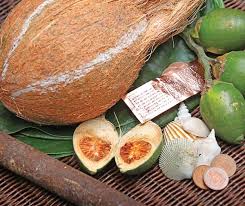 There is a great history for paddy cultivation in Sri Lanka. Sri Lankans' main food is rice and we have a great respect towards paddy plant, paddy field and everything associated with paddy cultivation.
There is a great history for paddy cultivation in Sri Lanka. Sri Lankans' main food is rice and we have a great respect towards paddy plant, paddy field and everything associated with paddy cultivation.Farmer considers paddy field and rice plant with divinity and he never allowed contaminating the paddy field.
Hence, the farmer considered about many things and his main aim was to gain a good harvest without polluting its divinity. It was not easy. Everything should be done according to tradition and culture.
About 900 years ago Sri Lanka was named as 'the granary of the oriental world' at the reign of King Parakramabahu. With enormous efforts of ancient kings we could even export rice to other countries.
How was the paddy cultivation done with so much success in the past without the help of tractors, harvesters and fertilizers and pesticides?
Our cultivation in past was bound with the nature. As there was a good relationship between cultivation and nature the land was fertilized and could gain a good harvest.
Kem healing practices
In the past our ancestors did not use pesticides for pests. They did not want to add poison to the sacred paddy field. They used Kem healing practices instead which is not also against their religion.
Kem healing practices for diseases caused by flies and worms
Great author Maxim Gorky of Russia said that the world has derived from the sun's rays and from Mother's milk. Our ancestors have acted according to this concept far before Gorky.
All the plants in the earth have grown with the impact of Sun. Therefore our ancestors have told their difficulties with pests to the Sun God.
They have boiled milk in the name of Sun God to eliminate diseases caused by flies and worms.
This is how it's done. Farmer first bathes and wear clean suits. Then he takes all the things needed for kem healing to paddy field and cooks a pot of milk-rice at the paddy field and throws them all around the paddy field.
This should be done with devotion and without saying a word.
These methods could be used even today. It is better than poisoning the paddy field the environment and consumers of rice.
Orange fruit Kem healing practice for diseases caused by worms
There were plenty of Orange trees in each household in the past. They used them to do a Kem healing practice for worms affecting the paddy field.
The farmer takes ample orange fruits to paddy filed and cuts them and inserts a worm to each fruit then puts the two half of orange together and smokes them. Then he burry them in paddy field and comes back home. This should also be done in silence.
Mande mathiriima (some sort of a chanting)
The farmer goes to paddy filed alone in the evening and makes a wooden stage. He lights a lamp in a corner and places a bronze plate near it and spray sandalwood powder on it. Then he chants a spell 108 times and keep them on the stage and goes home.
He comes in the following morning and takes the plate with two fingers and hit it with a nux-vomica tree stick and walks round the paddy field chanting a spell.
At the end he places the plate and the stick on the stage and won't touch it for 07 days.
Kem healing practice using oil of Mee tree
Mee tree is tightly bound with paddy cultivation. Oil taken from seeds of mee tree has been used in various purposes.
Above Kem healing practice is done as follows. Farmer goes to paddy field with an old robe and makes wicks for each part of the paddy field. Then they are soaked with oil of mee tree and chanted 108 times.
Then nux-vomica tree sticks are placed and lamps are lighted on those sticks. This is done at the sunset. Eventually, the farmer goes back silently.
This is how our ancestors have cultivated respecting environment and animal kind. They could even be utilized today. It just needs a true effort. If so it won't be necessary to cry saying paddy cultivation is unprofitable.
Prepared by
Theekshana Welenegoda




